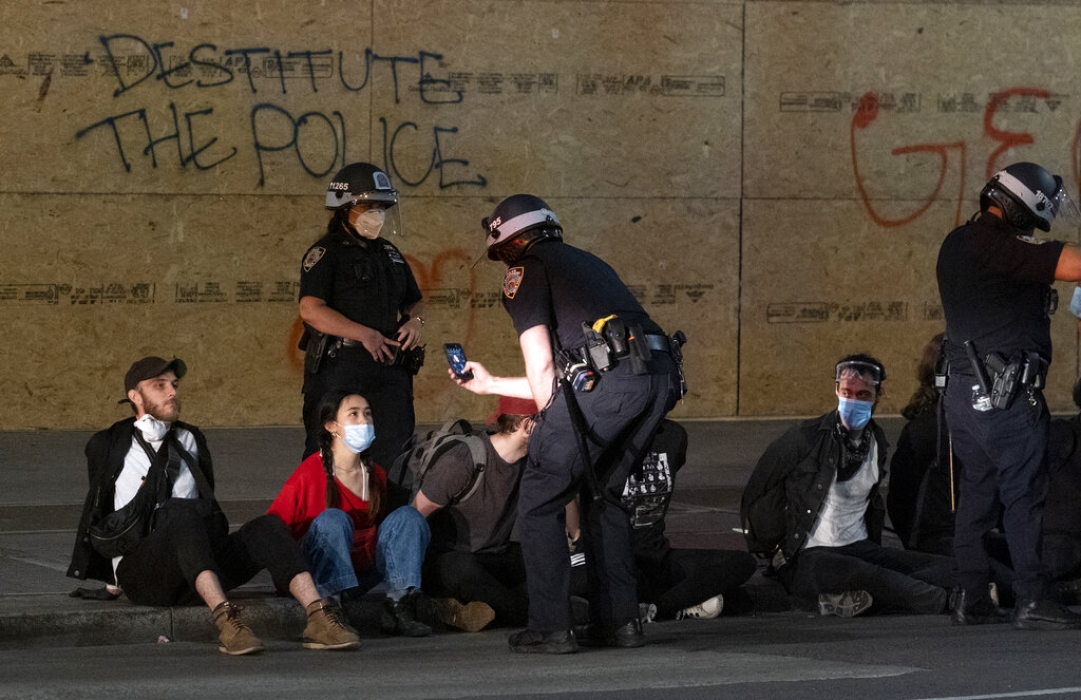Curfews are government policies that order certain persons — or all persons — to be off the streets by a certain time, usually in the evening, and to remain off the streets until the curfew is lifted, usually in the morning.
Curfews were imposed on racial minorities
During the Jim Crow era and occasionally during the civil rights movement of the 1950s and 1960s, governments in the South imposed curfews on African Americans. And on the West Coast during World War II, Gen. John L. Dewitt of the Western Defense Command imposed them on Japanese Americans. Such policies, aside from being racially discriminatory, are viewed as odious to those who seek to preserve the freedoms and ideals of the First Amendment.
Government have turned to curfews to quell urban riots
In the United States, governments legitimately may impose limited curfews only during times of dire emergency.
After many urban riots during the 1960s, government officials increasingly turned to the curfew. As a law review piece in the late 1960s explained: “the curfew is rapidly becoming one of the most popular riot control devices in the government official’s arsenal.” (“Judicial Control of the Riot Curfew” at p. 1560).
Many local governments have ordinances that provide that mayors or other city leaders can impose curfews during states of emergency. Such ordinances are justified by the government’s police powers. The North Carolina Supreme Court upheld a curfew in Asheville, North Carolina, noting that “experience in other cities also has demonstrated the efficiency of a preventive curfew promptly imposed.” State v. Dobbins (N.C. 1971).
Most litigation over curfews, however, concerns policies targeted at juveniles. Cities and states have enacted juvenile curfews to address juvenile crime or to protect the safety and well-being of youths. Some juvenile curfew laws have existed since the nineteenth century. President Benjamin Harrison referred to them as “the most important municipal regulation for the protection of the children of American homes, from the vices of the street” (Harvard Law Review 2005: 2402).
Courts say curfews must have exception for First Amendment-protected activities
Many times, juveniles and their parents challenge restrictive curfew policies, alleging violations of due process, equal protection, and the First Amendment.
In Nunez v. City of San Diego (1997), the 9th U.S. Circuit Court of Appeals ruled that to survive judicial scrutiny, a curfew law generally must contain an exception for minors who are engaged in First Amendment–protected activities, such as political events, death penalty protests, or religious services.
The lower courts have been divided over the constitutionality of curfews, even in the face of a First Amendment defense.
In Hodgkins v. Peterson (2004), the 7th U.S. Circuit Court of Appeals struck down Indiana’s curfew law although the law provided minors an affirmative defense if they were participating in activity protected by the First Amendment. The court reasoned that the defense did not save the ordinance because it “does not significantly reduce the chance that a minor might be arrested for exercising his First Amendment rights.”
Many courts will, however, uphold curfew ordinances if they provide for a First Amendment defense, whether specifically for the right of assembly or the free exercise of religion, or for expressive activities in general.
The D.C. Circuit Court of Appeals, in Hutchins v. District of Columbia (1999), upheld a curfew from a challenge that the law’s First Amendment exception was too vague. The appeals court reasoned that the ordinance’s First Amendment defense was “no more vague than the First Amendment itself.”
Earlier, the 4th Circuit Court of Appeals had upheld a city curfew for juveniles in Schleifer v. City of Charlottesville (1998): “We decline to punish the City for its laudable effort to respect the First Amendment. A broad exception from the curfew for such activities fortifies, rather than weakens, First Amendment values.”
Supreme Court has yet to examine curfew laws
Confusion on this issue in the lower courts likely will continue until the Supreme Court examines the constitutionality of a juvenile curfew law or a curfew enacted in the wake of an emergency.
The Court had an opportunity to review the constitutionality of a curfew in Bykofsky v. Middleton (1976), but the Court denied certiorari. Justice Thurgood Marshall dissented, writing that the Court should take the case to examine whether “the due process rights of juveniles are entitled to lesser protection than that of adults.”
While curfews remain an important tool to protect public safety and property, they do impose significant costs. Not only do curfews restrict individual freedom to assemble and meet, they can lead to the arrest of individuals who are not engaging in any criminal activity.
David L. Hudson, Jr. is a law professor at Belmont who publishes widely on First Amendment topics. He is the author of a 12-lecture audio course on the First Amendment, Freedom of Speech: Understanding the First Amendment (Now You Know Media, 2018). He also is the author of many First Amendment books, including The First Amendment: Freedom of Speech (Thomson Reuters, 2012) and Freedom of Speech: Documents Decoded (ABC-CLIO, 2017). This article was originally published in 2009, and last updated June 3, 2020.

